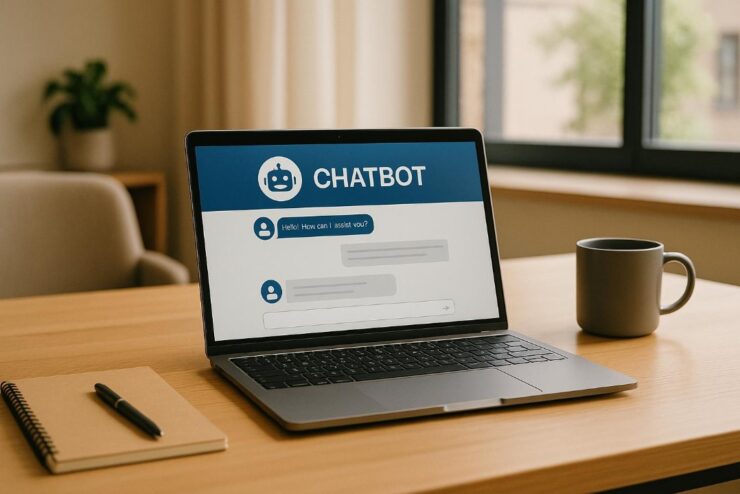There’s no going back now. Once AI content tools started cranking out blog posts, ads, video scripts, and even social media captions with decent grammar and decent speed, something shifted.
Not just in marketing, but in how businesses think about content as a whole, how it’s created, how it’s valued, and how it supports growth.
Let’s not pretend it’s just a shiny toy. AI content generators are reshaping business strategies in ways that go way beyond saving a few bucks on copywriting. The ripple effects reach into branding, hiring, sales funnels, customer service, even product development.
And for some businesses, especially the ones still treating content as an afterthought, it’s going to hit harder than they expect.
So what’s really changing? And what’s the smartest way to adapt?
Let’s dig in.
Content Creation Isn’t a Bottleneck Anymore
For years, producing content at scale meant cobbling together freelancers, in-house teams, editorial calendars, and way too many Google Docs. Everything moved slowly, and the cost of producing even a basic content library added up fast.
Now? With tools like Jasper, Copy.ai, ChatGPT, Grok, and dozens of others, one marketer can create more in a week than a full team did in a month just five years ago.
That doesn’t mean quality goes out the window. It just means the first draft doesn’t take eight hours. And more businesses are shifting their internal focus away from just “writing” and toward editing, refining, and directing content strategy at a higher level.
What it looks like in practice:
- Solo founders using AI to generate website copy, investor decks, and customer emails in the early stage
- Agencies turning around entire campaigns in half the time, while charging the same
- Enterprise marketing teams producing localized versions of the same core content in 10+ languages
- E-commerce brands rolling out product descriptions across thousands of SKUs with just a handful of prompts
Still, if you’re publishing at scale, running content through a detector de ia can help spot anything that feels too machine-written.

New Roles, New Skills, New Expectations
If you’re hiring content people the way you did five years ago, you’re already behind.
Writers are still critical—but the role is evolving fast. The best hires today are:
- Content directors who know how to shape strategy and lead AI workflows
- Prompt engineers who can coax gold out of models with creative, targeted prompts
- Editors who know brand voice and can spot a bland AI paragraph from a mile away
- Multimedia creators who blend AI-written scripts with video, audio, and visuals
You don’t need a massive team anymore. You need a smart one.
Tip for teams:
Train your people early. Give them tools like Notion AI, ChatGPT, or Writer.com, and let them experiment. The ones who embrace it will make your next campaign better—and cheaper.
The SEO Game Just Got Way More Competitive
Everyone’s producing SEO content now. The bar used to be “just show up.” Now it’s “say something useful and say it fast.”
Search engines are still catching up to AI-generated content, but the trend is clear: flooding your site with half-baked posts won’t cut it anymore. AI can help you get content live faster, but unless you’re actually solving a problem, you’ll get buried.
So businesses are getting sharper about:
- Search intent — making sure content answers what people actually want to know
- Topical depth — linking between pages, building authority on a subject
- Refresh schedules — updating older content using AI to stay competitive
- SERP monitoring — tracking what ranks and adjusting strategy in real time
AI gives you speed. But speed only helps if you’re pointing it in the right direction.

Brand Voice Still Matters (Maybe More Than Ever)
If everything sounds the same, nothing sticks.
AI-generated content has a “default tone.” It’s usually polite, overly formal, and a little boring. It doesn’t fight for attention. And it definitely doesn’t sound like your brand unless you train it to.
So the brands that are winning? They’re doing the work to:
- Feed AI their past content so it mimics their voice
- Create custom style guides and embed them in prompt templates
- Edit ruthlessly, cutting anything that sounds generic or safe
- Let real humans do the final pass, especially for customer-facing messaging
The goal isn’t to hide that AI helped, it’s to make sure no one notices.
Content Is Becoming a Two-Way Street
AI isn’t just for pumping out content. It’s also changing how businesses collect, analyze, and react to what customers are saying in return.
Some examples in the wild:
- AI chatbots that aren’t just answering FAQs but learning what questions come up most, and triggering new content ideas
- Auto-summarized customer reviews that inform product tweaks or reveal hidden pain points
- AI comment analyzers on social posts or blog articles that help prioritize community responses
In short, content is no longer just “publish and pray.” It’s part of a loop. And AI makes the loop tighter.

Video Scripts, Product Names, and Sales Pitches? Yes, All AI-Touched
It’s not just blog posts anymore.
More businesses are using AI in high-leverage creative work—stuff that used to take a whole week of whiteboarding and team brainstorming. Now it’s more like, “let’s throw 20 prompts at it and see what sticks.”
Real use cases:
- Scriptwriting for YouTube ads, explainer videos, TikToks, and brand reels
- Product naming with dozens of name ideas sorted by tone and market fit
- Email campaigns tailored to multiple customer segments with minimal manual tweaking
- Investor decks with pitch-perfect headlines and pain-point language in minutes
AI can’t replace your best creative minds. But it gives them a fast-forward button.
AI Is Creating More Opportunities – If You’re Paying Attention
Here’s what’s wild: while some companies are clinging to old processes, others are using AI to launch entirely new businesses.
We’re seeing:
- AI-powered content agencies that sell fast-turnaround services to niche clients
- One-person media empires building blogs, courses, and newsletters at scale
- SaaS companies building AI into their own products, think resume builders, customer support apps, internal knowledge hubs
- Creators spinning up digital products (ebooks, guides, prompts, templates) and letting AI do 80% of the work
It’s not just about shaving costs. It’s about spotting leverage.

Final Thoughts
AI content tools didn’t kill creativity. They just changed the rules. And the smartest businesses? They’re not scared of the change, they’re shaping it.
So whether you’re building a brand, running an agency, managing a team, or just trying to stay ahead of the curve… it’s probably time to stop asking if you should use AI for content, and start asking how.
Because the companies asking the second question?
They’re already winning.

